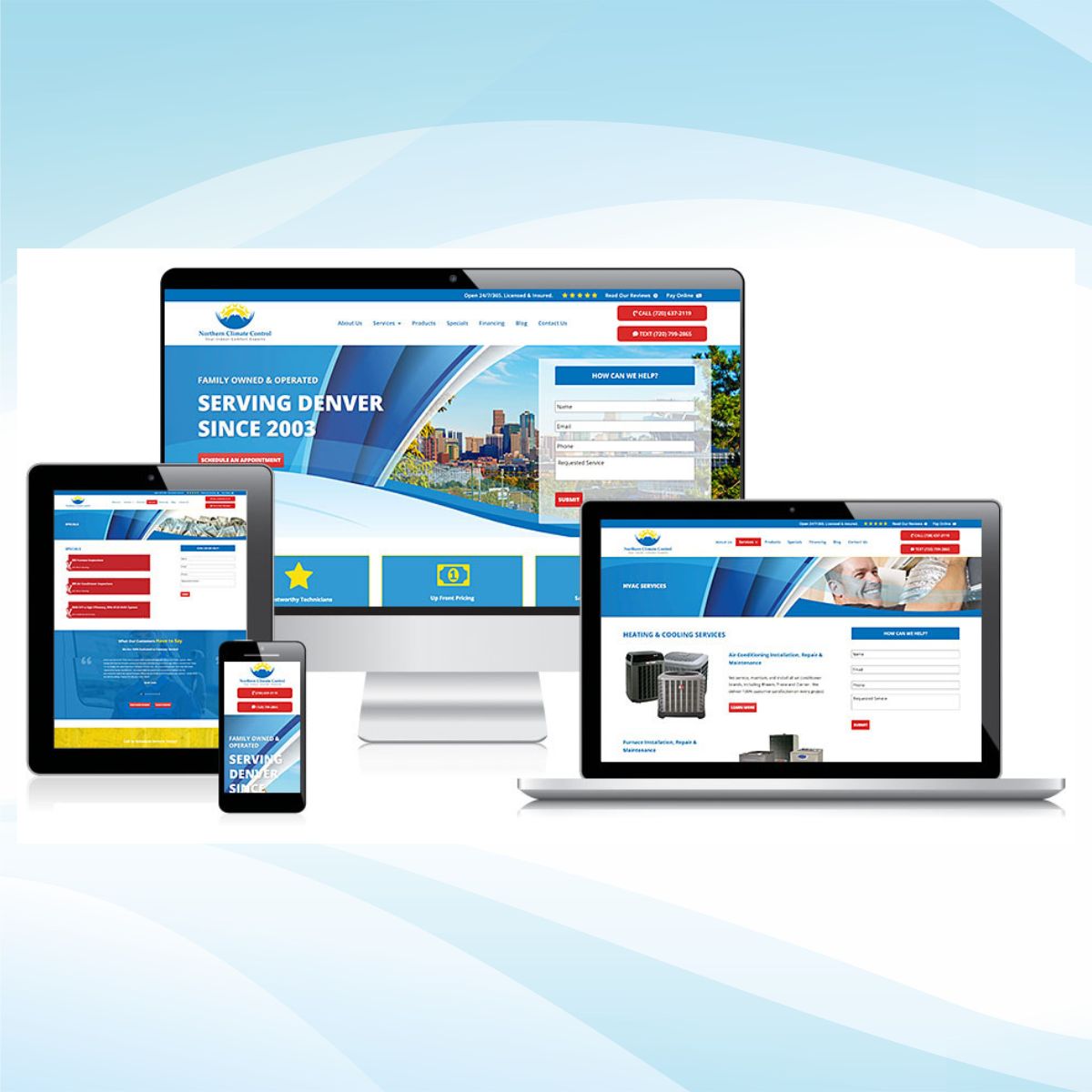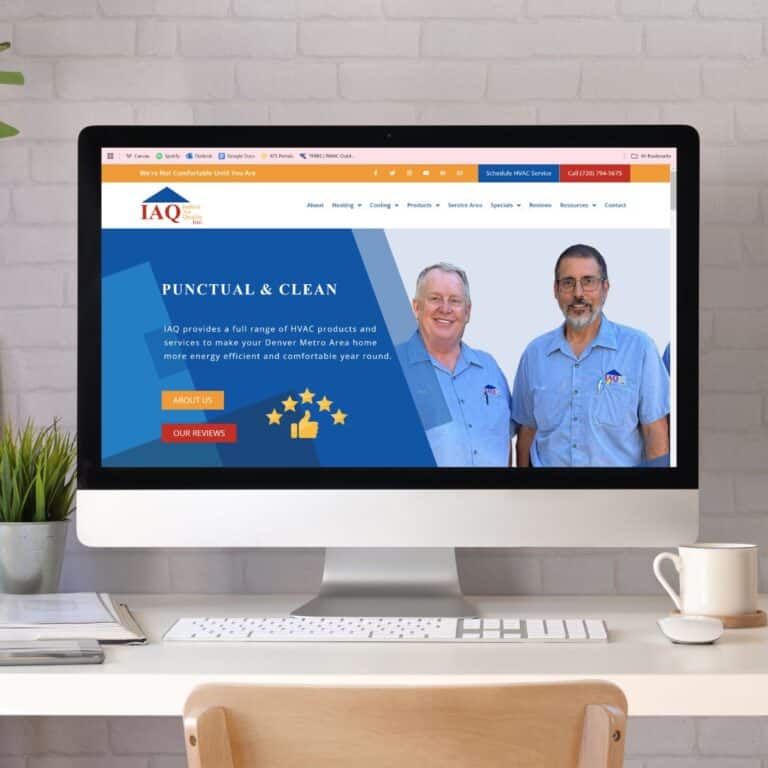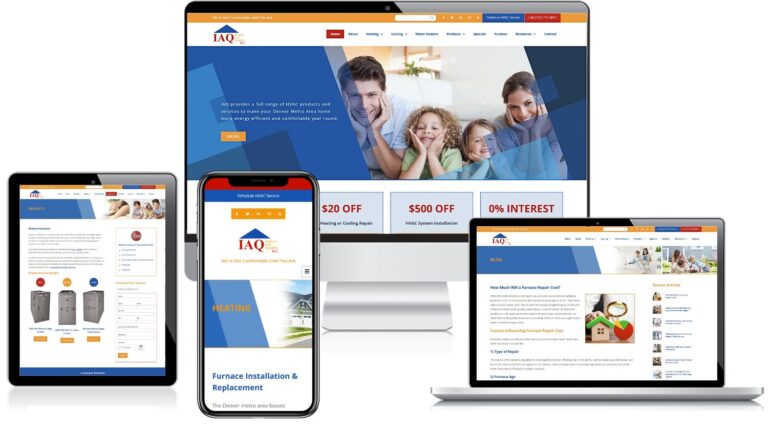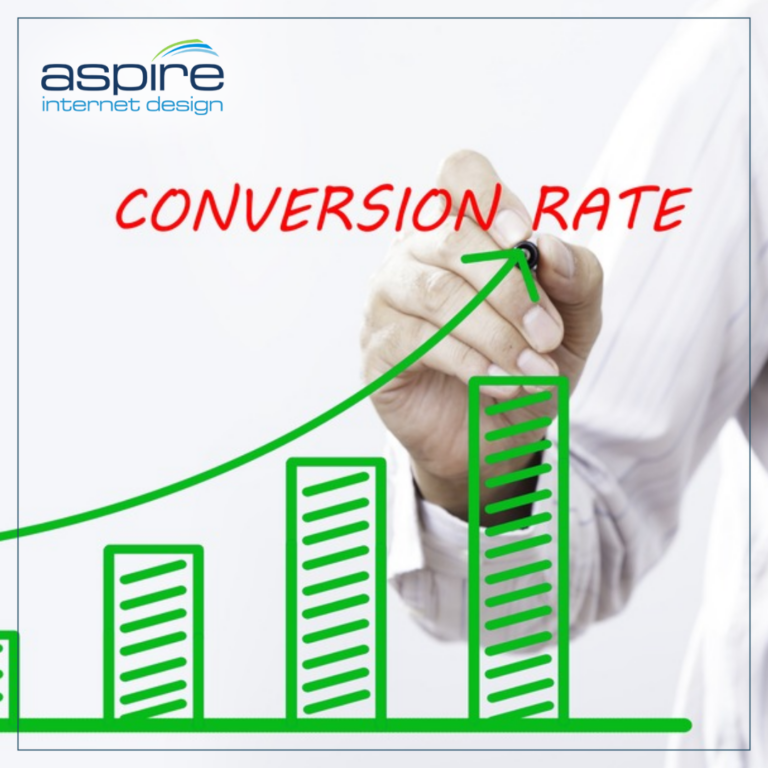
In today’s digital age, having a well-designed website is vital to the success of any business, and HVAC companies are no exception. Potential customers rely on the internet to help them decide on the best local services, so investing in a professional and highly effective HVAC website design is essential for your company to thrive in this competitive market.
Here are ten key elements that will make your HVAC website design stand out and drive more leads and conversions.
1. Responsive Design
Responsive design ensures that your website automatically adapts to various screen sizes, from desktops and laptops to tablets and smartphones. Potential customers are more likely to browse your website using different devices, so having a responsive design will improve the user experience and encourage them to learn more about your services.
2. Easy Navigation
Make sure that your HVAC website is easy to navigate with clearly defined menus and a logical site structure. Clearly categorize your services, provide a prominent contact link, and include your social media icons. Having an intuitive website will help visitors find the information they need quickly, increasing the chances of conversion.
3. High-Quality Images
Using high-quality images that are relevant to your services will immediately give your website a professional and trustworthy appearance. Including photos of your team, your completed projects, or before and after photos will help potential customers relate to your company and build trust in your services.
4. Informative Content
Provide website visitors with valuable information about your services, skills, and expertise. Clearly define your service offerings and communicate what sets you apart from competitors. Don’t forget to highlight your certifications, memberships, and awards to enhance credibility.
5. Effective Calls-to-Action
A well-designed HVAC website should encourage visitors to take action, be it requesting a quote, scheduling a service appointment, or signing up for a newsletter. Strategically placed calls-to-action (CTA) buttons throughout your website will help guide users towards these desired actions.
6. Testimonials and Reviews
Showcasing real customer testimonials and reviews will instill trust and confidence in your potential customers. Make sure to include them in an easily visible and accessible section on your website, so visitors can quickly assess your company’s quality and reputation.
7. Local SEO Optimization
Optimizing your website for local search engine optimization (SEO) will increase the chances of potential clients in your service areas finding you online. Ensure your website includes geo-specific keywords, as well as your business name, address, and phone number, on all pages for better search visibility.
8. Blogging and Social Media
Creating and regularly updating a blog with relevant industry news, tips, and case studies is an excellent way to demonstrate your knowledge and expertise. Sharing these blog posts on social media platforms will also increase website traffic and generate interest in your services.
9. Design for Speed
Website load speed is an essential factor in user experience, and a slow website will drive visitors away. Ensure your HVAC website is optimized for speed by reducing image sizes, avoiding unnecessary plugins, and using a reliable hosting service.
10. Tracking and Analytics
Implement tracking and analytics tools like Google Analytics and lead tracking to monitor website performance, page views, and user behavior. Regularly analyzing this data will help you identify areas where your website may need improvement and measure the success of your digital marketing strategies.
By incorporating these ten key elements into your HVAC website design, you will create a professional online presence that not only looks great but also effectively drives leads and conversions. Consulting with a professional web design agency specializing in HVAC businesses, like Aspire ID, can help guide you towards creating the perfect website to showcase your company. Contact us for a free consultation.






